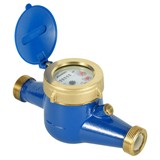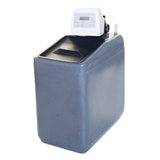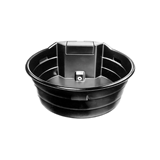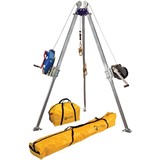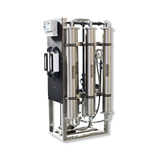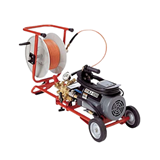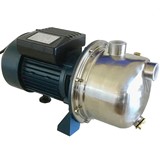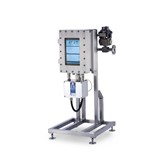Now a team of researchers from the National Centre for Groundwater Research and Training (NCGRT) is boldly going where no one has yet gone before — into the densest layers of rock, sediment and clay that rule the fate of 97 per cent of the Earth's fresh water.
Engineers Dr Wendy Timms, Dr Steve Bouzalakos and a team from NCGRT and the University of NSW, are employing what they have dubbed 'an environmental time machine' to investigate for the first time how water penetrates these stubborn, water-resistant layers deep underground.
The answer is, with immense difficulty and over vast spans of time — but all this has immediate consequences for sustainable use of our precious groundwater, whether it is for drinking, for growing food, for mining and energy extraction or for carbon dioxide and nuclear waste disposal, according to Dr Timms.
"Since fresh water holds the key to Australia's future population, food and industries, understanding how water penetrates the various layers underground is central to how we look after and manage it," she said.
"If we don't understand the rates at which water sinks into the ground, we may unintentionally pump aquifers dry, with serious consequences for the communities and industries which depend on them.
"This is a core issue in managing the waters of the Murray-Darling Basin, for example — and, increasingly, the water supply in many of our cities also.
"It we cannot tell if an overlying layer is waterproof, we can't be sure that drilling for gas, or burying hazardous wastes may not contaminate other waters above or around it. If we can't be certain a layer is impermeable, we may not be able to safely store carbon dioxide below it, to slow climate change.
"So these rocks, though out of sight and largely out of mind, in fact lie at the heart of some of the most contentious issues Australians face today — water security, contamination, and global warming."
Among several approaches, Dr Timms' team is using a rare device — one of only two in the world in fact — known as a geotechnical centrifuge, to test the rate at which water penetrates dense material. Its two-metre arm spins at high speed, creating forces 500 times those of the Earth's natural gravity.
"We call it an environmental time machine because in a single day of testing we can emulate what happens in rock over more than 20 years," Dr Bouzalakos said.
"For the first time we can accurately assess how quickly water moves through these dense layers and use that to predict things like how quickly an aquifer will recharge, or whether it will leak into other surrounding aquifers.
"For example, when you drill for coal seam gas, you may want to test whether there is any chance that the gas might leak into somebody's drinking water or stock water, or to see if there is a connection to shallow aquifers."
So far the team has measured about 100 samples of rock collected from major basins across the continent, from depths of up to a kilometre, to test the rates at which water can penetrate them. It is a small start on a very large piece of exploration which aims, ultimately, to find out how much fresh water Australia actually has, and how often it is replenished. It is thought that more than 90 per cent of the nation's supplies exist underground, rather than in rivers, lakes and dams on the surface.
"We know where most of the aquifers are, but we are still finding out how much water they hold and how often they are replenished," Dr Timms said.
"This is information essential to making sure we have enough water for all our needs — and those of the Australian environment — in time to come, when we may encounter greater water stresses due to population demands and a changing climate.
"I like the quote from Leonardo da Vinci, because it's amazing how much we still don't know about the place we live. We are only now venturing into 'inner space' to answer some of these questions about water using the very sophisticated new equipment like the centrifuge and complex computer models.
"That's why the work at the Groundwater centre is so exciting. For me, it is a lifetime opportunity to do some really big-picture science in a place that is very hard to look into — some of the densest regions in the Earth's crust — but with results that will affect people in their daily lives and work.
"Australia's groundwater is like your bank account. If you take out more than you put in, you get into trouble. We need a reliable way to know how much water we are 'banking', and this research will help provide the answer."
The National Centre for Groundwater Research and Training is an Australian government initiative, supported by the Australian Research Council and the National Water Commission.


